Last year I learned to appreciate the Investigations lesson in which students explore fractions as division in a Division Table: https://mathmindsblog.wordpress.com/2014/03/18/fraction-to-decimal-division-table-noticings/. However, as I was planning this year, I thought I really missed the mark in making it an explicit understanding that fractions represent division before exploring this table. I think I completely just assumed that students understood this from previous years and investigations with sharing situations involving fractional answers. I decided to check it out this year to see what they students knew/understood before beginning the division table work. I thought it could make some really nice connections evident.
I started by putting a few sharing problem on the board: 6 subs shared by 4 people, 9 subs shared by 4 people, 3 subs shared by 5 people, and 6 subs shared by 9 people. I asked how much each person would get if they shared the subs equally. I gave the students some individual time to work through the problems and, after that, an opportunity to share their answers and strategies with their group. In the majority of the class, I saw the work I had anticipated based on their third grade brownie sharing work in Investigations. A lot of drawing of subs, people, and “passing out” of the pieces.
One student thought about the whole being the number of subs, divided it into the number of people sharing and arrived at decimals, however struggled when he got to the 6 shared by 9. (The side written piece is after I asked them to write what they noticed and then he proved it worked with fractional subs to start).
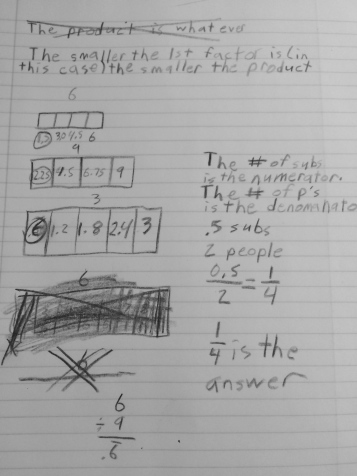 I had a few students that provided the perfect transition between the visual drawings and the fraction being division. They intuitively wrote the problem as a division problem and solved it using what they know about multiplication. After sharing some of the visual representations, I had these students share their equations. They explained to the class that is felt like division because they were dividing it up among people.
I had a few students that provided the perfect transition between the visual drawings and the fraction being division. They intuitively wrote the problem as a division problem and solved it using what they know about multiplication. After sharing some of the visual representations, I had these students share their equations. They explained to the class that is felt like division because they were dividing it up among people.
After our sharing, I revisited the original problems, with the students proven answers, and ask them to write what they noticed about the problems. After a few moments, I heard so many “Oh My Gosh”s and “It was really that easy”s echoing about the room. One student exclaimed, “Why did I do all of that work?” pointing to his beautiful sub and people drawings.
Here are some of their noticings (I love that they automatically start proving it to see if will always work without me even asking anymore).
This one just absolutely cracked my up and proved once again that I cannot make assumptions about student understandings….
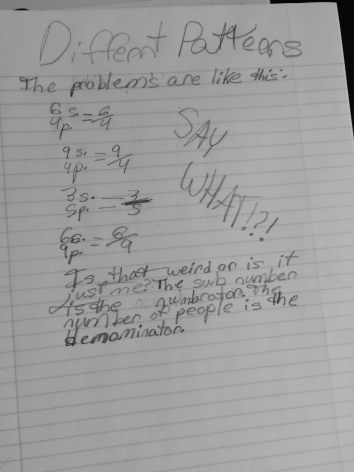 From this point, we tested out a bunch, talked about why it will always work and then starting looking at representing our “benchmark” answers as decimals. Tomorrow, I feel great knowing we will start looking into the division table with a deeper understanding of fractions as division. The word “explicit” sometimes makes me cringe in the way of “telling” students things, however I feel in this case the understanding of fractions as division was made explicit to the students through their own work group sharing and noticing today. I think that may be the piece I have missed before… I assumed they knew and could arrive at an answer, however never made the idea explicit as a whole group.
From this point, we tested out a bunch, talked about why it will always work and then starting looking at representing our “benchmark” answers as decimals. Tomorrow, I feel great knowing we will start looking into the division table with a deeper understanding of fractions as division. The word “explicit” sometimes makes me cringe in the way of “telling” students things, however I feel in this case the understanding of fractions as division was made explicit to the students through their own work group sharing and noticing today. I think that may be the piece I have missed before… I assumed they knew and could arrive at an answer, however never made the idea explicit as a whole group.
Today was a great day in math…Say What?
-Kristin
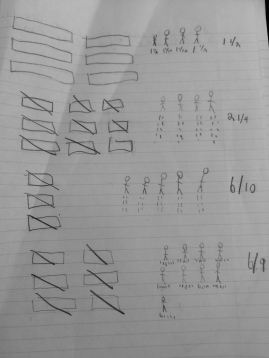
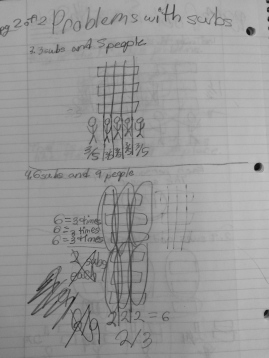
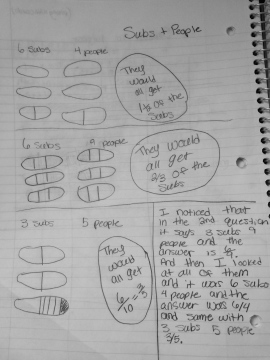
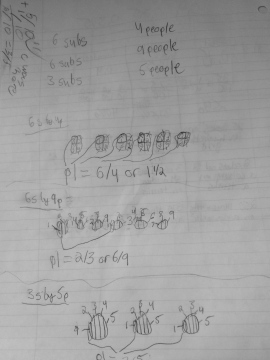
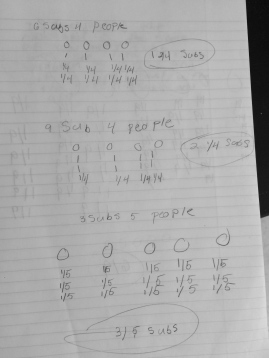
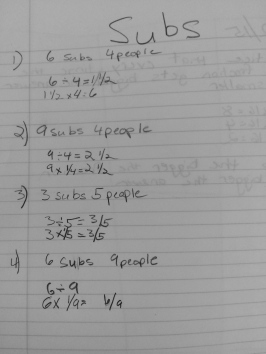
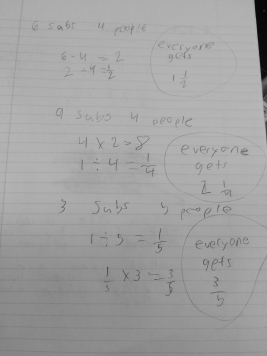
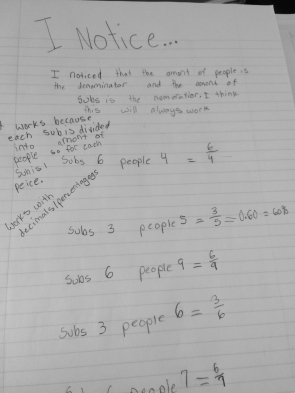
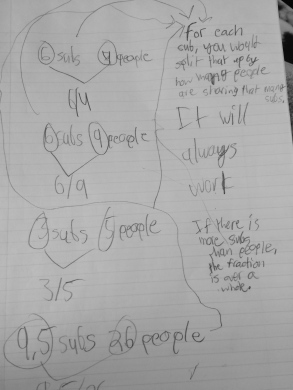
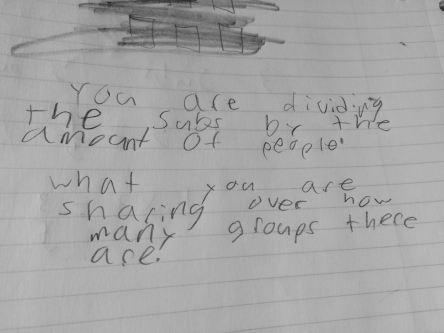
This is one of my favorite conceptual links. Division to Fractions. It makes soooooooo much sense. Fraction understanding makes sense when presented in this CGI manner! Thanks for the post Kristin.
Have you seen this unit from Contexts for Learning Mathematics? http://www.amazon.com/Field-Trips-Fund-Raisers-Introducing-Investigating/dp/0325010234
I couldn’t tell if the sub sandwich problem you wrote about was from this or TERC. If not, its a great context in which to ground these story problems into a true investigation!
LikeLike
Thanks so much!! I have never seen this book, awesome! My reading list gets longer and longer!! I didn’t get the context from Investigations, but I read it somewhere a while ago, just cant remember where. Funniest part was when I wrote them on the board, everyone started to say,”This is like those brownie problems in third grade.” Excited they remembered!! It was a great day!!
LikeLiked by 1 person
Contexts for Learning Mathematics is an amazing curriculum for elementary! Here’s a link to the full curriculum! You’d LOVE it! Its right down your alley! http://www.contextsforlearning.com/
LikeLike
What a great day to be a teacher!
LikeLike
Yes Faith! I wish you were there because you would have loved some of their reactions!
LikeLike
I realized my students didn’t understand what fractions were, what they represented, and how to work with them when I introduced rational operations this year. I had to go back and review the idea of a common denominator. They had an algorithm to use, but because they didn’t understand what was happening, they couldn’t connect/shift the process. I went further back, creating the very same wholes and parts your students relied on – but because these were 11th and 12th graders, they had not been taught this way. I think I will borrow your ideas of subs and people when I review – again – before the end of the year. A good foundational knowledge in fractions really is critical to success in the middle and secondary mathematics!
LikeLike
Pingback: Top 5 TMC Things – duffduffmath
Pingback: Fraction Division and Complex Fractions | Math Minds